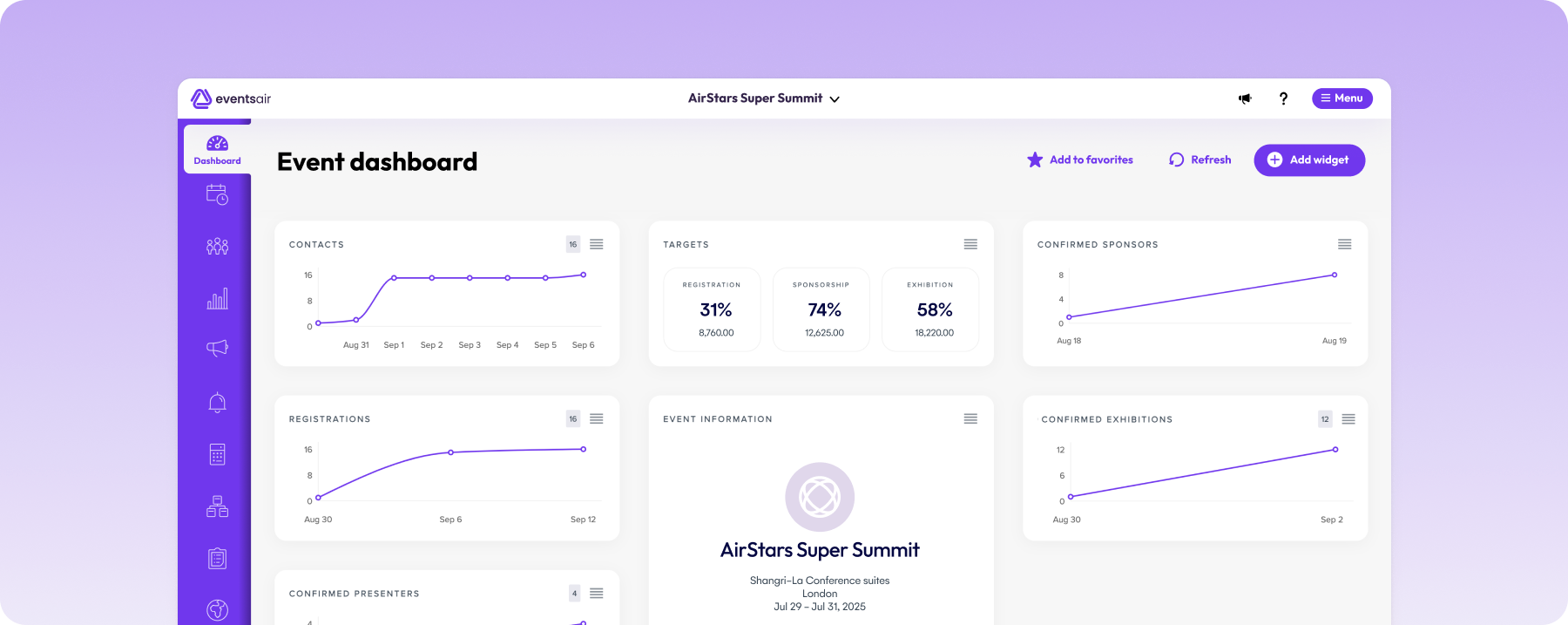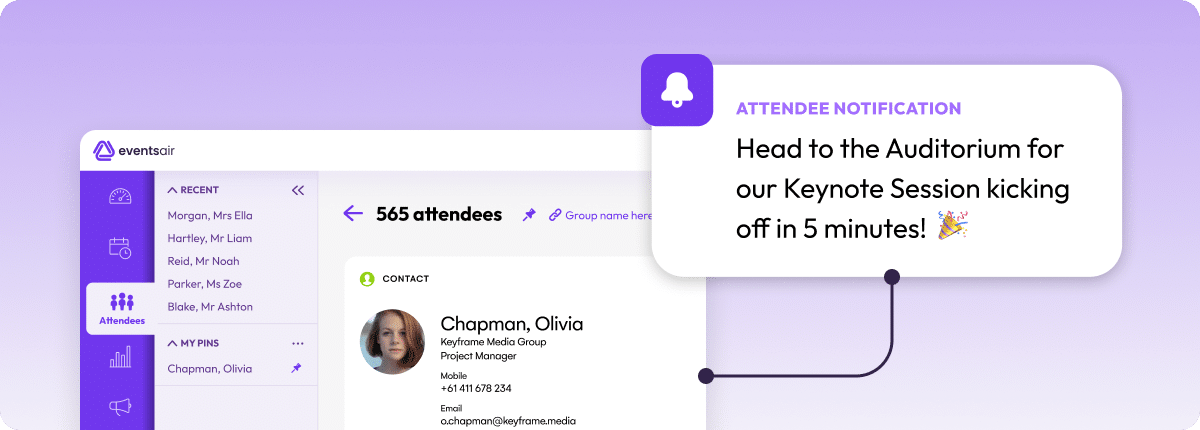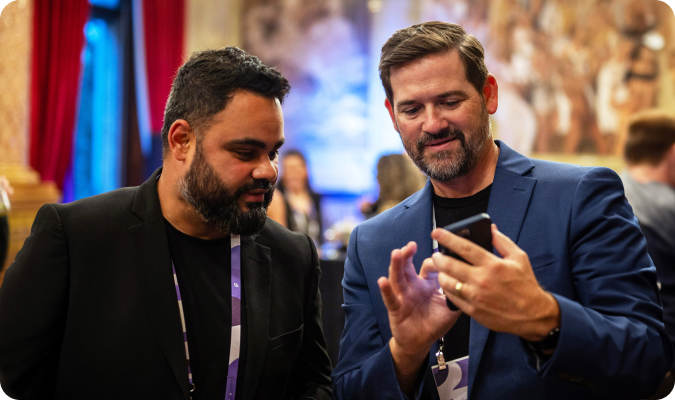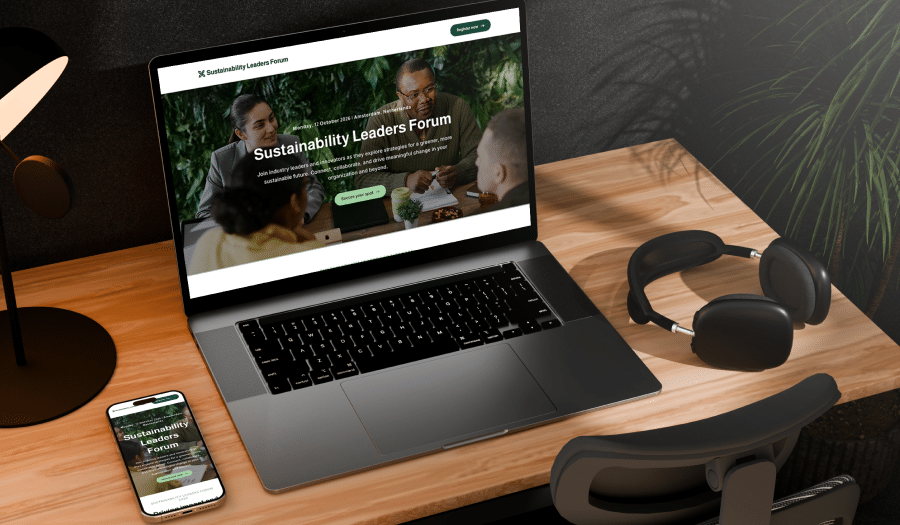
Most event organizers recognize the need to promote an event. But only a few understand how to really go about it.
Promoting an event takes more than a few last-minute posts or emails. To get real results, you need a plan that starts early and keeps everything moving. That’s where an event promotion timeline comes in.
In this EventsAir article, we’ll explain an event promotion timeline and how to build one that actually works. Whether you’re new to event planning or just want a smoother process, you’ll leave with a simple plan you can start using today.
What is an event promotion timeline?
An event promotion timeline is a structured schedule that lays out your marketing activities before, during, and after your event. It keeps your promotion organized and strategic, so you’re not scrambling at the last minute or missing critical opportunities to engage your audience.
- The “when”: Timing each task so your outreach is well-paced and aligned with important dates like early bird deadlines or registration cutoffs.
- The “how”: Choosing the right channels and tactics, such as email, social media, digital ads, or press outreach, to reach your target audience effectively.
With these pieces in place, you can divide your promotion into clear, manageable stages. You’ll know exactly when to build awareness, drive registrations, send reminders, and re-engage attendees after the event wraps.
Still at the planning stage? Check our guide on Event Planning Timelines (+ How to Build One) instead.
Why do you need an event promotion timeline?
- Keeps your timing on track: A timeline ensures each promotional task aligns with key dates, like early bird deadlines or final registration pushes, so your messaging hits when it matters most.
- Aligns your team: With a clear schedule, everyone knows what to do and when. No guesswork, just smooth collaboration and shared goals.
- Supports your budget: Planning helps you allocate funds wisely, spread out costs, and avoid costly last-minute decisions. Tools like EventsAir have budgeting and planning features that make this process even more efficient.
- Makes tracking easier: A timeline lets you monitor progress in real time, so you can adjust what’s not working and double down on what is.
- Sustains engagement before and after: Rolling out content in phases keeps interest high, encourages early sign-ups, and makes post-event follow-ups easy to plan.
How to build an event promotion timeline that works
Understandably, event specifics differ. But no matter the size or type of event, this guide would help you organize your marketing, keep your team in sync, and promote with confidence.
Stage 1: Pre-event promotion planning (6 to 12 months before)
This is where everything starts. You’re not launching anything yet, but you’re making the key decisions that will shape how well your promotion goes later.
What you need to do:
- Set clear goals: Define what success looks like. Is it registrations, engagement, or sponsor sign-ons? Keep it specific and measurable to guide decisions.
- Know your audience: Understand who you’re targeting. Consider age, interests, roles, and challenges to shape messaging and choose the right channels.
- Plan your budget: Divide your marketing spend among ads, content, design, and tools, leaving room for surprise costs.
- Build your brand: Create a name, logo, tagline, and tone that reflect your event. Use them consistently across all materials.
- Reach out to partners early: Start talks with sponsors, speakers, or media. The earlier they’re in, the more they can help amplify your reach.
- Document and communicate decisions: Keep a record of key choices, like messaging, branding, and timelines, and make sure your team and stakeholders are aligned.
Stage 2: Launch phase (3 to 6 months before)
Now it’s time to go public. You’re moving from planning to action, i.e. getting your event in front of people and starting to build momentum.
What you need to do:
- Get your website live: Create a clean landing page with event details, registration links, and speaker highlights. Make it mobile-friendly and easy to navigate. If you’re using EventsAir, you can quickly spin up branded event websites with built-in registration and personalization tools.
- Start your content engine: Post blogs, videos, or social updates about your theme, speakers, or behind-the-scenes prep. Stay consistent and audience-focused.
- Kick off email campaigns: Send announcements and early bird offers to past attendees and email lists. Keep it simple and engaging.
- Get social media going: Choose platforms your audience uses. Post regularly, use your event hashtag, and encourage shares.
- Send out press releases: Announce your event to the media and blogs. Highlight what’s unique, who’s involved, and why it matters.
This stage sets the tone, so stay consistent and visible. Make it easy for people to get interested and start spreading the word.
Stage 3: Engagement phase (1 to 3 months before)
You’ve got attention. Now, you need to keep it. This stage is about building trust, answering questions, and giving people reasons to commit. Keep the energy up and the message clear.
What you need to do
- Run targeted ads: Use paid campaigns where your audience spends time, including Google, LinkedIn, and Instagram. Highlight key benefits, deadlines, and retarget people who didn’t register.
- Work with influencers or partners: Ask speakers or sponsors to help spread the word. Share premade graphics and sample posts to make it easy.
- Build community spaces: Open a LinkedIn group, Discord, or Slack where people can connect and stay engaged.
- Show off social proof: Share who’s already coming: big names, brands, or even real attendee testimonials. Seeing others sign up adds credibility and FOMO.
Using a platform like EventsAir helps you keep this engagement phase running smoothly by centralizing attendee data, tracking registrations, and automating personalized messaging.
This is your momentum stage. Stay visible, stay responsive, and make it easy for people to say yes.

Stage 4: Final countdown (1 to 4 weeks before)
It’s almost showtime. People are either getting ready to attend or still thinking about it. This phase is all about urgency, clarity, and support.
What you need to do
- Send reminder emails: Follow up with attendees and leads. Share updates, tips, and countdowns to drive last-minute signups.
- Drop limited-time offers: Use promo codes or flash discounts to create urgency. Make deadlines clear and easy to act on.
- Double down on logistics: Share schedules, speaker lists, venue info, and FAQs. Use visuals and checklists to simplify prep.
- Push on social media: Post updates, behind-the-scenes clips, and reminders. Encourage your community to share and tag others.
- Get one last media push: Offer short pitches or interviews to blogs and journalists. Even late exposure can help.
People are busy, so keep things simple and clear. Your job now is to keep the energy up and make decisions easier.
Stage 5: Event day
This is it. Your event is live, and everything comes together today. Your focus now is real-time engagement and smooth execution.
What you need to do
- Share live updates: Post photos, quotes, and reactions in real time. Use stories, threads, and reels. Keep your hashtag active and encourage tagging.
- Engage on the ground: Reply to comments, repost attendee content, and thank people. Keep your channels active and personal.
- Capture the experience: Have someone gather visuals, quotes, and testimonials. These will fuel your post-event content.
- Highlight big moments: Share key takeaways, speaker clips, or audience polls live to keep remote audiences connected and make those who didn’t attend wish they had.
Using EventsAir’s integrated tools, you can effortlessly coordinate live updates, manage attendee interactions, and centralize all your event content for a seamless day.
You only get one shot at event day. Stay sharp, stay present, and make it count.

Stage 6: Post-event (1 to 4 weeks after)
The event’s over, but your promotion isn’t. This is your chance to thank people, keep the momentum going, and turn attendees into long-term supporters.
What you need to do
- Send thank-you messages: Thank attendees, speakers, sponsors, and partners. Keep it short and personal. A little goes a long way.
- Share the highlights: Post event photos, videos, quotes, and key stats. Use blog posts or email roundups to recap and celebrate.
- Ask for feedback: Send a short survey while it’s still fresh. Ask what worked, what didn’t, and what people want next time.
- Follow up with leads: If your event had a business angle, reconnect now. Share next steps or related content while interest is high.
- Measure everything: Review registrations, engagement, and ROI. Compare results to your goals and document what to improve.
EventsAir makes post-event follow-up effortless by helping you automate thank-you emails, distribute surveys, and gather analytics all in one place, so you can focus on nurturing those valuable connections.
A strong finish helps turn a good event into a lasting connection. Use it to build your next success.
Maximize your event success with EventsAir’s promotion tools
Planning a well-timed event promotion timeline is crucial to ensure every message reaches your audience at the right moment, boosting attendance and engagement. Without a clear plan, it’s easy to miss key opportunities or overwhelm your team with last-minute tasks.
EventsAir supports your entire promotion journey by centralizing communication, automating email campaigns, tracking engagement, and providing real-time analytics, all designed to keep your timeline on track and your audience excited from start to finish.
Ready to take the stress out of event promotion and maximize your turnout? Get started with EventsAir today!
Attendee Engagement | Event Marketing
See EventsAir in action
Discover why 12,000+ event professionals trust EventsAir to deliver effortless events, every time.




